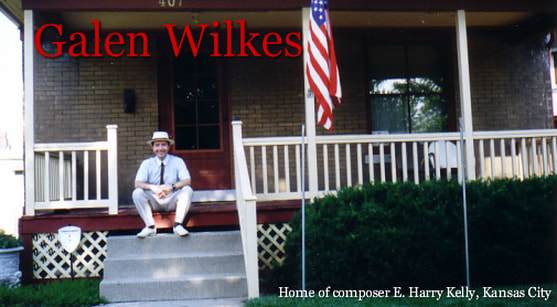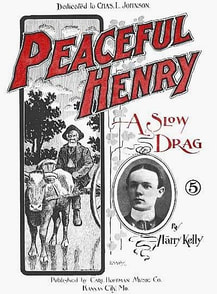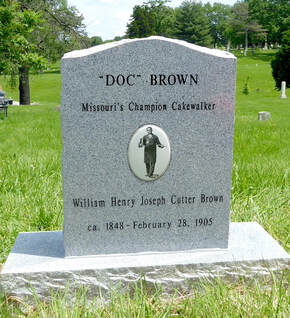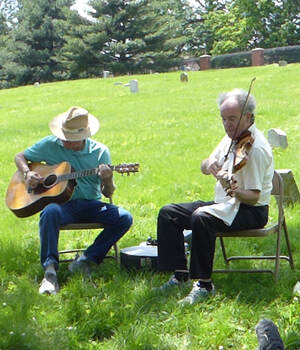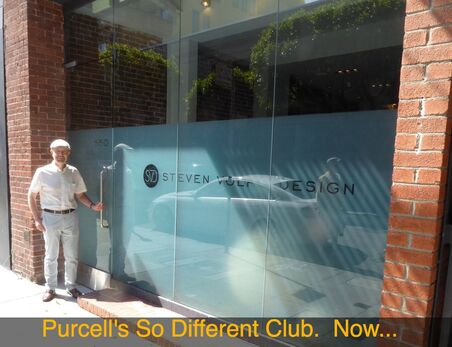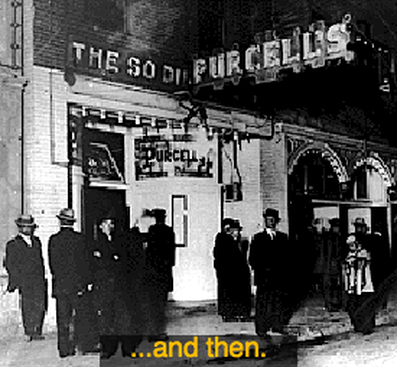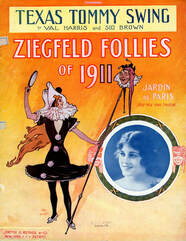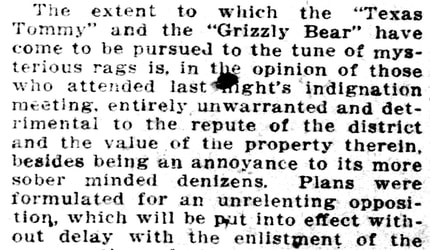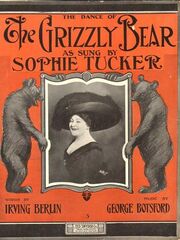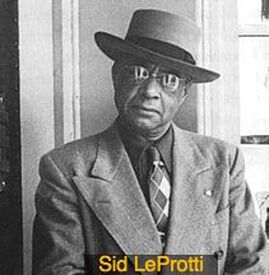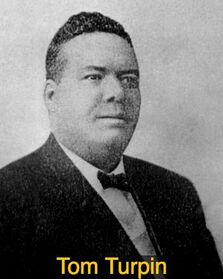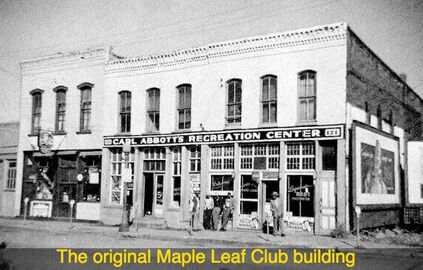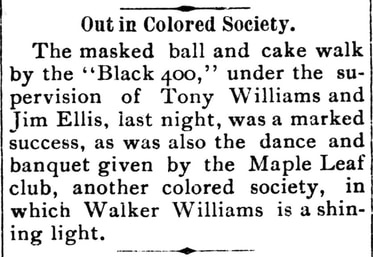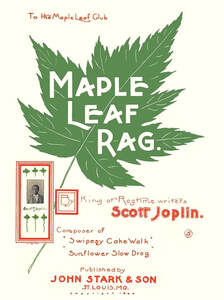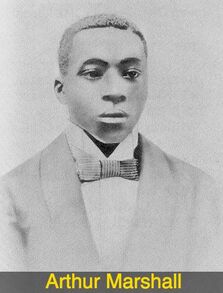Music, History & Artifacts
of the Ragtime Era
Welcome! I am a pianist, scholar, showman and producer. I love the arts and entertainment of the early 20th century. I have been an advocate of this era since the 1970s. This website will continually develop as I add materials from my archive collected for over 45 years. Currently, little of that has been added to date, so please check in from time to time. The above photo was taken in Kansas City, Missouri at the home of composer E. Harry Kelly. I appeared with the Etcetera String Band in a home concert in Kelly's living room. It was part of a historic home tour in the 1990s. Kelly wrote the first 20th century rag hit, Peaceful Henry, in 1901. Visiting historic sites and meeting musicians' families are some of my interests. A number of Kelly's relatives visited that afternoon. It was an exciting event and I always look forward to participating in others.
* * * * * * * * *
DOC BROWN, CAKEWALKER
Headstone dedication
Renowned cakewalker Doc Brown finally has a headstone on his grave. It was dedicated on May 19, 2024. Admirers can now visit his final resting place adorned with this simple but elegant marker. It was designed to fit in with the other stones in that section. Cakewalks were performed by Pat Ireland and Kevin Sanders, and a "prize cake" was presented for all to enjoy. The king of cakewalkers can continue to proudly display his medals; he was always ready to defend his title. Thanks to all who donated and participated in the dedication. You made it happen.
* * * * * * * * * * * *
Story on Galen from The Syncopated Times

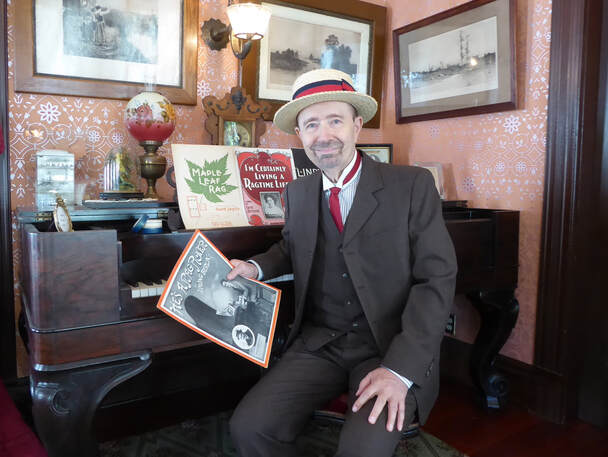
https://syncopatedtimes.com/a-visit-with-galen-wilkes-ragtime-renaissance-man/
* * * * * * * *
Rag Time Traveling
The Barbary Coast, San Francisco
Here I am at the infamous Barbary Coast in San Francisco. Known for its vice and violence, ragtime found a home in the many clubs of the area, giving us the Texas Tommy and the Grizzly Bear. I am standing outside of what was once Purcell's So Different club where pianist Sid LeProtti played. One of his own piano pieces was confiscated and turned into the hit, Canadian Capers. Ragtime dances such as the "Tommy" and the "Bear" spread over the country (along with other "animal dances" such as the turkey trot, crab step, camel walk, et al) causing a sensation. Not a good one, however. Antics and the physicality on the dance floor brought outrage, and banning them was in full swing nationwide by 1913. Along with it was the targeted demise of the Barbary Coast, but several attempts were not successful. A film was actually made of this wild neighborhood before it was to be shut down but it is now lost. Tom Turpin of St. Louis even visited Purcell's and played when he popped in and out.
Sedalia, Missouri. The cradle of ragtime
Sedalia, Missouri was not Joplin's hometown but he spent a good part of the 1890s, and then some, living there. It holds significance in ragtime's history. Joplin met his supportive publisher there, John Stark, who championed Joplin's "Classic ragtime", and he also met two young pianists whom he befriended and mentored. With the railroad and cattle drives, Sedalia became a thriving town. This gave rise to saloons and brothels, places of employment for piano players. Two black social clubs also contributed to musical events, and they existed on Main Street. The Maple Leaf Club is well known and Joplin was pianist there. The building no longer exists. In the photo upper left, I am kneeling by a monument commemorating Joplin, his cohorts, Classic ragtime, and the Maple Leaf Club. It has been moved down the block where the club building actually stood. The center photo shows the Black 400 Club building at the other end of the block, on the opposite side of the street. They would sometimes compete with each other and other times collaborate. The photo on the right is a shot of some of the buildings along Main Street that housed saloons and bordellos. These were often dangerous places, even the social clubs. The violence that existed there caused locals to brand it "Battle Row". Joplin's first rag was not published here, but in Kansas City. But, his second rag came out of Sedalia, bearing the same name as the social club, and made its mark on the world - The Maple Leaf Rag, 1899. From here we also got works by Arthur Marshall and Scott Hayden, Joplin's proteges.
For more, click on the "Rag Time Traveling", menu.
* * * * * * * * * * *
